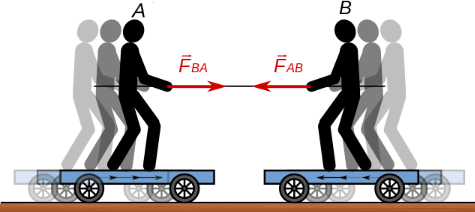- Science
- Grade 6
- Force, motion, and energy
Science.6.7.C

Knowledge and Skills Statement
The further explanation is designed to be a resource for educators that helps them better understand the topic their students are learning. Further explanations may be written at a more complex level than would be expected for students at the grade level.
If object A and object B interact (collide), then object A will exert a force on object B and object B will exert an opposing force on object A, but in the opposite direction.
For example, the force of the weight of an object on a table creates the simultaneous force of the table pushing up on the object; this is called the normal force. When a collision occurs between two objects, they each simultaneously exert an equal and opposite force on each other.
One common misconception is that Newton's third law describes a cause-and-effect relationship (action leads to reaction). Another misconception is that the force pair acts on the same object. The force pair describes the forces that occur simultaneously as a result of an interaction between two objects.
Research
Bobrowsky, Matt. “SCIENCE 101: Q: What’s Wrong With ‘For Every Action, There Is an Equal and Opposite Reaction’?” Science and Children 56, no. 7 (2019): 69–73. https://www.jstor.org/stable/26901433.
Summary: This article details Newton's Third Law, explaining that forces come in pairs. Multiple examples are provided to illustrate the concept, and common misconceptions are addressed through simple activities.

